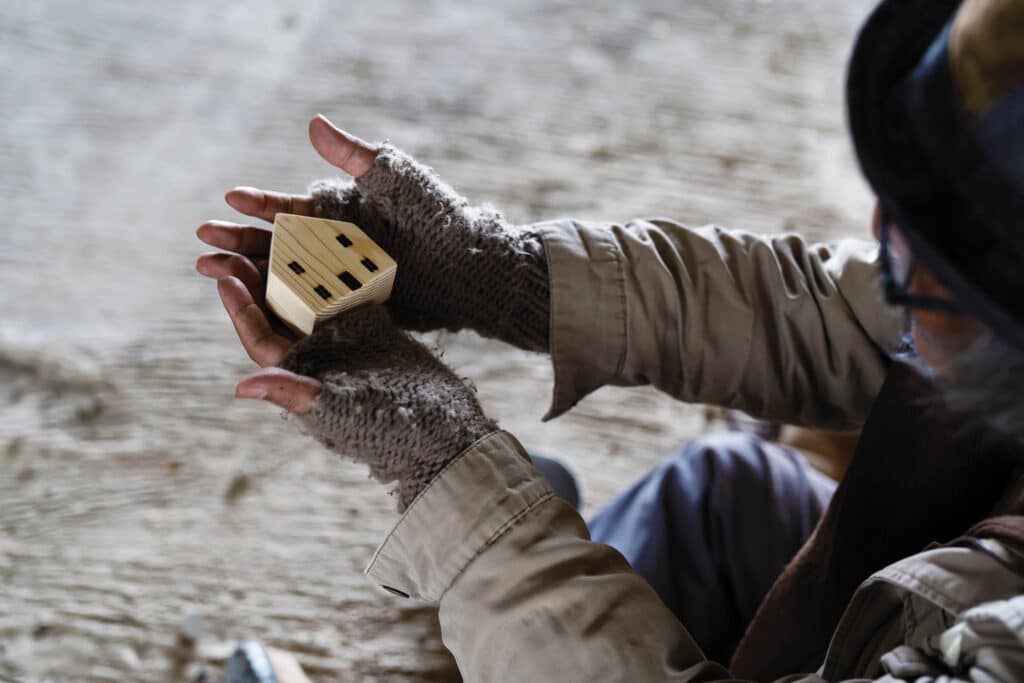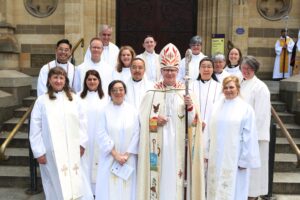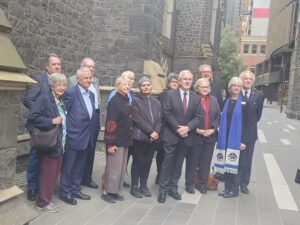
Penny Mulvey
9 August 2024
I take for granted the comfort of a warm bed in a safe place each night. That is not the case for one in 95 people around Australia. More than 273,000 Australians sought help from homelessness services in 2022-2023.
For those of us living in the south of Australia this winter, we have probably headed out the door with gloves, beanie, coat, warm socks – everything to help us stay warm as that arctic wind whips around us! A cardboard bed and old sleeping bags placed on cold concrete up against a wall provide little protection for those who are living rough on our streets.
It is little wonder Homelessness Week, this week, is held in the middle of winter. The weather reminds us of how glad we are to have a heater, doors that seal out the cold, rugs to layer our laps and beds. Not so for those 273,000 Australians.
Read more: Homes for homeless closer because of agreement
Homelessness Week is an annual campaign coordinated by Homelessness Australia. It drives awareness about homelessness, who it affects, and what solutions are needed to end homelessness for Australia.
This week, Homelessness Australia released the 2024 Child Homelessness Snapshot, which revealed that more than 25,000 children remained homeless even after seeking help from specialist support agencies in 2022-23. This was a nationwide 3.2 per cent increase over the previous year.
The report is confronting for those of us who do not work or volunteer within the community sector. For example, of the more than 76,000 children under 18 who sought help from homelessness services, almost 16,000 approached such services alone, often fleeing violence or familial neglect.
Homelessness Australia chief executive Kate Colvin describes child and family homelessness as a blight on Australia.
“These figures should ring alarm bells among politicians and policymakers that action to tackle child and family homelessness is urgently needed,” she said.
For city workers, the image of the beggar on the street is often what represents homelessness. However, the beggar is only one type of homelessness.
When a person does not have suitable accommodation, for example, they have no permanency of accommodation, they are sleeping in a car, the dwelling is inadequate, they are couch surfing, the housing is overcrowded, they are sleeping in a tent, they are homeless.
Read more: As the people of God, we must help those struggling with homelessness
Community service agencies across Melbourne stress that anyone can become homeless due to an unexpected change of circumstances. However, some groups are more vulnerable, especially our Aboriginal and Torres Strait Islander peoples, women over 55, children under 18, LGBTIQA+ individuals, veterans and people with disabilities.
“We urgently need a comprehensive national strategy to ensure that no Australian child ever experiences the trauma of homelessness. Our nation has the resources to solve this crisis. What we need now is the ambition to make it happen,” Ms Colvin reinforced.
In its report, Homelessness Australia has outlined ambitious targets and timelines for action on the major drivers of homelessness; rental stress, domestic and family violence, and access to the support families need to thrive.
For more information go to homelessnessaustralia.org.au/homelessness-week
Fact sheet about child homelessness: HA Child and youth homelessness fact sheet (homelessnessaustralia.org.au)
For more faith news, follow The Melbourne Anglican on Facebook, Instagram, or subscribe to our weekly emails.







